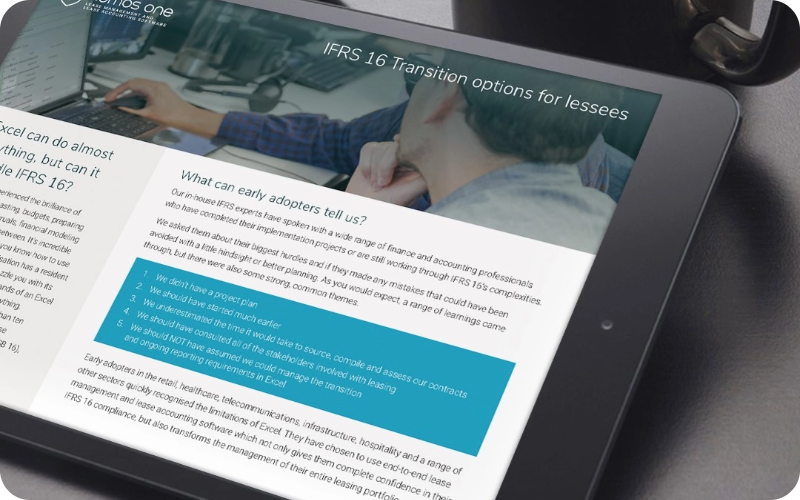Lease accounting journal entries have undergone significant changes with the introduction of IFRS 16. This lease accounting standard replaced the previous standard IAS 17 and brought a major shift to the way organisations should recognise, measure and report on leases in their financial statements.
Below we provide a step-by-step overview of IFRS 16 lease accounting journal entries, helping you navigate this complex area of lease accounting.

Initial Recognition of a Lease
When creating lease accounting journal entries, the lessee needs to measure and recognise a Lease Liability and a Right-of-Use Asset when entering into a lease.
Recognition of Lease Liability and Right-of-Use Asset
The Lease Liability amount is determined by the present value of the lease payments over the expected lease term. The Right-of-Use Asset is then equal to the Lease Liability at Commencement (plus or minus some other adjustments).
Dr Right-of-Use Asset $XXX
Cr Lease Liability $XXX
Subsequent Measurement of Lease Liabilities
The lessee then adjusts the Lease Liability and Right-of-Use Assets with the following entries:
Lease Payments
At the scheduled payment dates, lessee recognises the payments made:
Dr Lease Liability $XXX
Cr Cash $XXX
Interest on lease liability to account for the present value impact of a period
Interest expense reflects the financing impact of a lease arrangement, by the ongoing measurement at the present value of the lease liability at each reporting date.
Dr Interest Expense $XXX
Cr Lease Liability $XXX
Depreciation of the Right-of-Use Asset
Depreciation expense is incurred to wind down the Right-of-Use Asset over the remaining lease term.
Dr Depreciation $XXX
Cr Accumulated Depreciation $XXX

Reassessments and Modifications
If there are any reassessments or modifications of the lease agreement, the lessee needs to adjust the lease liability and right-of-use asset accordingly. Lease reassessments are the changes relating to the contractual terms of the lease, whereas lease modifications are the changes that were not part of the original contractual terms. However, the lease accounting journal entries are largely the same, whether a lease reassessment or modification.
For any changes in lease payments for the remainder of the lease term, either through rent reviews or as revised lease payments, an increase or decrease in expected option terms to exercise or extend the lease term would remeasure the lease liabilities.
If the above changes increase Lease Liability as a result:
Dr Right-of-Use Asset $XXX
Cr Lease Liability $XXX
If the above changes decrease Lease Liability as a result:
Dr Lease Liability $XXX
Cr Right-of-Use Asset $XXX
For changes in decreasing the lease term lease modification, or partially terminating the lease would result in the following journals:
Dr Lease Liability
Cr Right-of-Use Asset
Dr/Cr Gain/Loss from a lease modification

IFRS 16 has revolutionised lease accounting journal entries, emphasising transparency and accurate reporting. Properly recording lease transactions is crucial for organisations to not only comply with the standard but also to provide meaningful financial information to stakeholders. By following the steps outlined in this guide and adopting a reliable lease accounting software solution, you would be well-equipped to handle the initial recognition, subsequent measurement, lease payments, modifications, and disclosures related to lease accounting.
Remember to always consult with accounting professionals or refer to the specific requirements of IFRS 16 for more detailed guidance on lease accounting journal entries.
With careful attention and diligence, you can effectively navigate the challenges of implementing the IFRS 16 lease accounting standard, keep accurate records, and present reliable financial information to stakeholders.

























